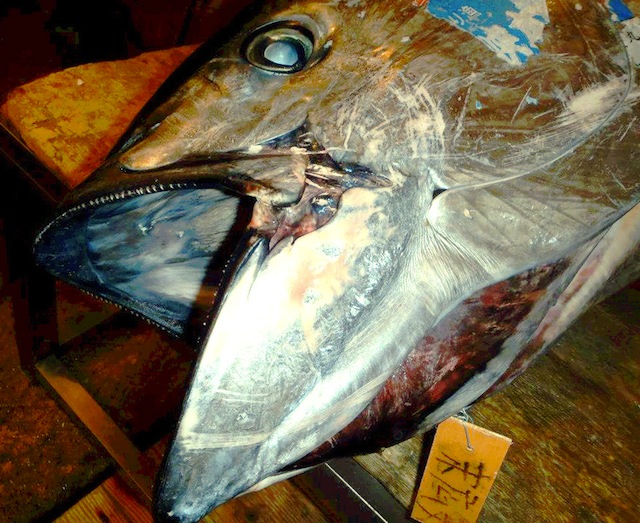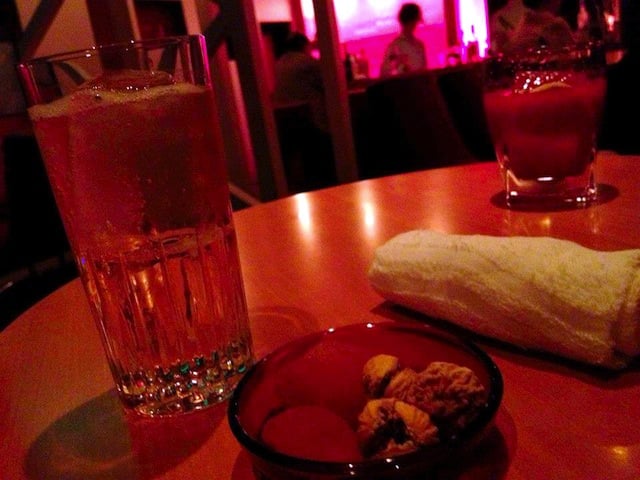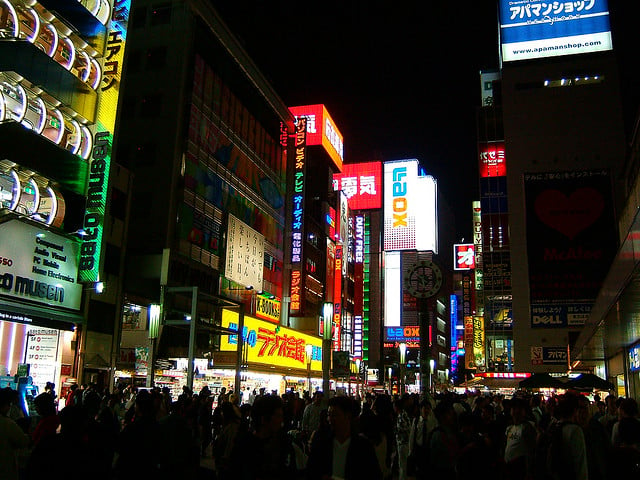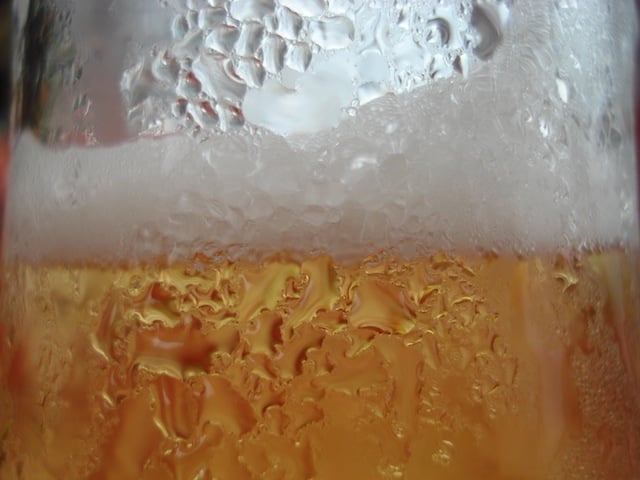For many, traveling to a big city makes it hard to find the cultural immersion they’re looking for. On a recent trip to Japan I visited Tokyo and Takemtomi Island. While the tiny island with its heritage-listed village and preserved customs showcased culture in every corner, Tokyo was very metropolitan. In between the modern skyscrapers, 5-star hotels and new age fusion restaurants, however, there are traditional experiences to be had. You just need to know where to find them.
Getting There
You’ll get your first taste of local culture before even arriving in Japan on your American Airlines flight. The airline recently began offering nonstop service from New York’s JFK airport to Haneda Airport in Tokyo. This is in conjunction with their already nonstop flights to Tokyo’s Narita Airport from Dallas, Los Angeles and Chicago, as well as their Oneworld Alliance partner Japan Airlines‘ nonstop flights from Chicago, Boston, Los Angeles, San Diego, San Francisco, Honolulu and Vancouver. Onboard American Airlines, sample local Tokyo flavor through Japanese sakes and wines as well as menus offering Japanese cuisine from celebrity chefs. Opt for an Edo-style bento box or dishes like cilantro marinated chicken served over a bed of seasoned summer noodles or a grilled fillet of Pulehu beef topped with a shiitake mushroom cream sauce, sauteed vegetables and mashed potatoes with spinach and corn.
Stay
For those who want a mix of luxury and culture, the Shangri-La Tokyo is a centrally-located hotel offering world-class rooms, Japanese cuisine, culture-inspired artwork and spa treatments based on ancient Asian curative traditions. Throughout the building you’ll find over 2,000 pieces of artwork, many of which have a heritage-focused influence, like the “Sonata of Anemone.” Inspired by the sound of their wedding chapel, the picture depicts a trail of dancing anemone — a species of flowering plants — by an artist whose intent was to bring out joy and fun in the entire wall panel, with Kimono fabric and Japanese bead being used. In their high-end Japanese restaurant Nadaman, signature dishes include fresh market sashimi, a colorful selection of sushi and Fois gras egg custard with truffle sauce. Once your stomach is satiated, head to the Lobby Lounge and indulge in the city’s classic cocktail culture with a handcrafted “Kyoakane” made with Hibiki 17y, plum liqueur, cranberry juice, honey and fresh lemon juice, a “High Lama” with vodka, dry vermouth, Sapin liqueur and Crème de Cassis or a light and refreshing “Asian Beauty,” made with Champagne, tea liqueur and mango puree. And when it’s time to truly indulge your senses, visit the spa to balance your body’s chi, stimulate circulation, alleviate stress and just relax.
Tours
If you really want to discover Tokyo’s cultural sites and secrets, call Shinji Nohara of Tokyo Fixer. Shinji knows the ins and outs of the city and will create an itinerary based on your interests. If you want proof he knows his stuff, just ask tough-to-please Anthony Bourdain, who has used Shingi’s guide services many times.
Meiji Jingu Shrine
Take the subway to Harajuku Station to explore one of the city’s most spiritual sites. Meiji Jingo Shrine is a Shinto shrine focused on Japan’s indigenous spirituality, which was first recorded in the 8th century. The site honors the goodwill work of Emperor Meiji Jingo and his consort Empress Shoken and gives people a chance to pray, honor timeless heroes and connect to their country’s past. Stroll through the tranquil Yoyogi Park until you come to the main shrine as well as the inner and outer shrine halls, the treasure house and the kitchen where food offerings are prepared. Remember to wash your hands and mouth with the water provided at the gate before entering. Before bowing to say a prayer watch a local, as there is a specific rhythm of claps you must do first.
Happo-En Tea Ceremony & Japanese Gardens
To experience a traditional Japanese tea ceremony, take the subway to the Shirokanedai area via the JR Meguro Station and visit Happo-En. They have an informal Japanese tea house where you can stay as long or as short as you’d like and with no pressure to get dressed up. A misconception many foreigners have about tea in Japan is that locals partake in formal tea ceremonies regularly; however, in reality a formal Japanese tea ceremony takes hours and is a fancy affair reserved for special occasions. The informal tea ceremony allows you to learn more about the meaning of the ceremony, which is not so much about making tea but how the tea host, or Teishu, welcomes guests in accordance with the current season and how he or she prepares the tea in an aesthetically- pleasing manner. The tea used for the ceremony is of the highest quality, so those who drink it can make the most of its curative properties. Make sure you also spend time in the colorful Japanese gardens, full of ancient bonsai trees, towering Japanese maples, vibrant leaves and a colorful coy pond.
Daily Life At The Fish Market
At Tsukiji Market, you can wander around to see the fresh catch of the day as well as an array of other crustaceans and marine life. For something really gruesome yet interesting, head to the tuna section where they cut up 1,000-pound fish in a no-nonsense fashion. Just remember to wear close-toed shoes, as there will be quite a bit of blood and guts. If you’re daring, try the samples given out by some of the local seafood vendors. I tried some kind of sea urchin – not quite sure what it was – and it was pretty, ummm, interesting.
Classic Cocktail Culture
Tokyo is world-renowned for their classic cocktail culture. In fact, bartenders from cosmopolitan cities like New York and Sydney often look to Tokyo for guidance in their libation creation. To truly experience this side of the city you should head to Kagurazaka, where you’ll find a plethora of signless venues hidden down narrow alleyways. Many of them look like nothing, so you’ll need to do a bit of searching – which only makes it that much more special when you do find a great spot. The major thing that sets Tokyo’s speakeasies and underground bars apart from the rest of the world’s is the locals who know about them are serious about keeping their identities secret. In fact, Shinji made me promise not to disclose the location of the above photographed underground bar, which I’ll just call “Bar C” to give you a hint. While I can tell you the snacks are dried figs and apricot, the cocktails I cannot as this is the type of place where you tell the bartender a bit about your tastes and he crafts a perfect libation for your personality.
Electric City
Electric City is the nickname for Akihabara, as it’s the epicenter of electronics in Tokyo. Whether you go day or night, a visit here is a great way to get a glimpse of Tokyo’s energetic and advanced technology culture.
Harajuku Fashion
Get off at Harajuku Station to check out Tokyo’s most iconic fashion trend: Harajuku. Based on anime and manga, these outrageous outfits push the limits of style and are worn by those who want to be individuals, not followers. Above you can see two girls dressed in a Harajuku style called “Sweet Lolita,” with pretty frills, light colors and a child-like feel. There are classic, gothic and punk Lolita styles, as well.
Cultural Classes
Some typical Japanese classes to take include tea ceremony, calligraphy and flower arranging. This can be an excellent way to experience the culture firsthand. Instead of going through the hassle of trying to set this up yourself with language barriers and such, I would advise having the concierge at your hotel or Shinji of Tokyo Fixer help you out with this. When I was staying at the Shangri-La in Tokyo, there were classes nearby on all these focuses.
Craft Beer
Tokyo isn’t just known for its tea and classic cocktails, but also its microbrews. Despite a slow economy, the Japanese craft beer industry is both growing and improving.
In fact, publisher of Japan Beer Times Ry Beville writes in their Autumn 2012 issue, “I think the growing numbers of educated consumers will control the fate of craft beer. That, and Japan’s many brewers increasingly dedicated to high quality. We’re not just on the cusp of a boom. We’re seeing a paradigm shift, where heightened consciousness of quality and choice is giving craft beer a permanent home in Japan.”
My personal favorite microbrewery in Tokyo is the Harajuku Taproom owned by Baird Brewing Company. They have an interesting selection a great beers if you like hops, like the “Suruga Bay Imperial IPA, a rich beer described as a “fireworks like festival of hops.” Opt for the sampler which will allow you to try three of their brews for 1,000 yen (about $12).
You can also find your own craft beer venue with the Craft Beer Japan App. And for a bit of fun, check this out: Japan Beer Times Is Sponsoring A Beer Label Art Contest.
Sumo Wrestling
If you want to experience Japanese sumo, you have a few options. The hub of sumo wrestling in Tokyo is Ryogoku, which is where you’ll find the sumo stadium, sumo stables where you can watch wrestlers train in the morning or attend a fight at night. Some sumo stables, or beya, where you can make a reservation to watch a practice include Arashio, Izutsu and Minezaki. Again, I would advise having a guide or your hotel arrange this for you. If you want to experience sumo culture through taste visit a local chanko restaurant. These establishments are usually owned by retired sumo wrestlers and serve a protein-rich stew called chankonabe eaten by sumo wrestlers to put on weight. Don’t worry about your waistline, however, as it’s the quantity that leads them to put on the pounds.
Hiking & Hot Springs
While this may not sound like a cultural activity, the Japanese are sensitive to the changing seasons, so getting outside to experience nature is the perfect way to begin thinking like a local. The most popular place to go hiking when in Tokyo is Mount Takao, which has an array of picturesque trails for all fitness abilities. Afterward, you can take the free shuttle bus from Takao Station and Takaosanguchi Station to Takao no Yu “Furoppy” spa which features 11 natural hot spring baths.
Geisha Shows
Many people visit the city of Kyoto because geisha shows are popular there; however, they do exist in Tokyo. Instead of spending tons of money hiring a geisha for a private party, it is much more budget-friendly to attend a show where you can watch the girls perform traditional song and dance, called odori. A few places to check out to see if there is a show going on include Asakusa Kenban Theatre, Kagurazaka Gekijo Theater and Asakusa Kenban Theatre.
Cultural Institutions
A sure bet to learning about local culture is to visit an institution like an art gallery or museum. The Tokyo National Museum is a good place to start. Located in Ueno Park in Taito, this art museum is the oldest Japanese national museum established in 1872. Visitors can peruse over 1,000 pieces of Japanese artwork and artifacts. There’s also the Edo-Tokyo Museum, which provides insight into the city’s heritage through exhibits related to history and culture. And at the Paper Museum, which covers everything from traditional Japanese washi paper to modern Western paper to recycled paper and environmental issues relating to the material. Remember, these are just a few of the many cultural museums and art galleries in Tokyo.
Jessica Festa
Latest posts by Jessica Festa (see all)
- A Culturally-Immersive Adventure In Mongolia’s Altai Mountains - Jul 8, 2023
- This Recipe Sharing Platform Supports Women In The Culinary Industry (Labneh Recipe Included!) - Nov 5, 2020
- Hiking The Mohare Danda Community Eco-Trek In Nepal - Jun 3, 2020
- 6 Important Questions For Choosing A Responsible Yoga Retreat - May 18, 2020
- How To Create & Grow A Profitable Blogging Business (Ethically) - Jan 18, 2020

















